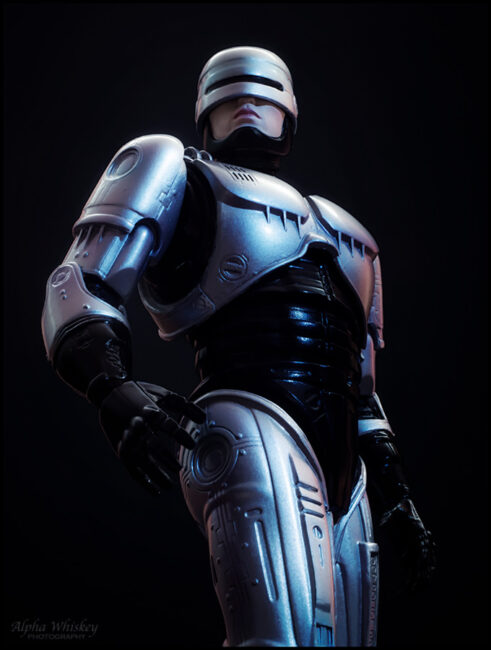With much of the global human population currently on lockdown (at the time of writing) this may be the perfect opportunity to think about creative projects to try indoors. You know I’m going to talk about toys and I know that many of you don’t think it’s ‘real’ photography. The abuse is always out there but as someone who has snapped almost every subject, I am still compelled by this genre’s ability to stimulate my creative juices far more than turning up at sunrise and pushing a button, as understandably serene and enriching as that may be.
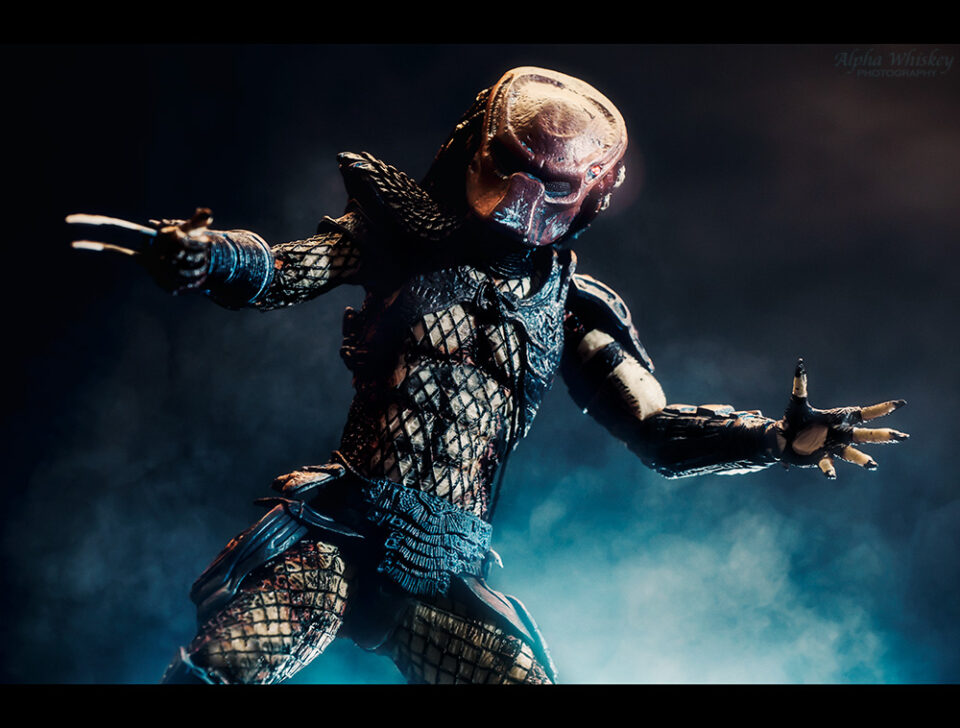
But now that you’re all obediently following government advice and staying indoors, it could be a great way to connect with your kids and your family by involving and challenging them to bring their inanimate characters and objects to life. It’s also a good way to show the world (and your boss, if you have one) that you’re still alive, functional and thinking creatively.
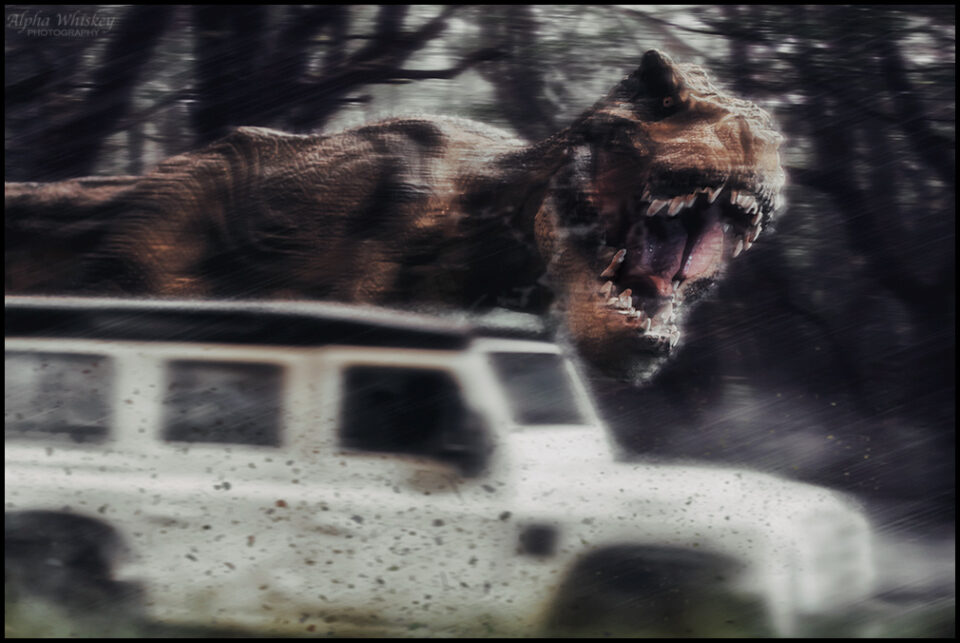
Toy photography (and I include toy cars in that) is actually a fairly sizeable community but somehow the idea of grown men playing with and posing their action figures and dolls seems a little weird and remote to me. And the majority of the photos still look like toys. My interest has always been to try and make the subject look as real and believable as possible. Of course, you might argue I don’t succeed!
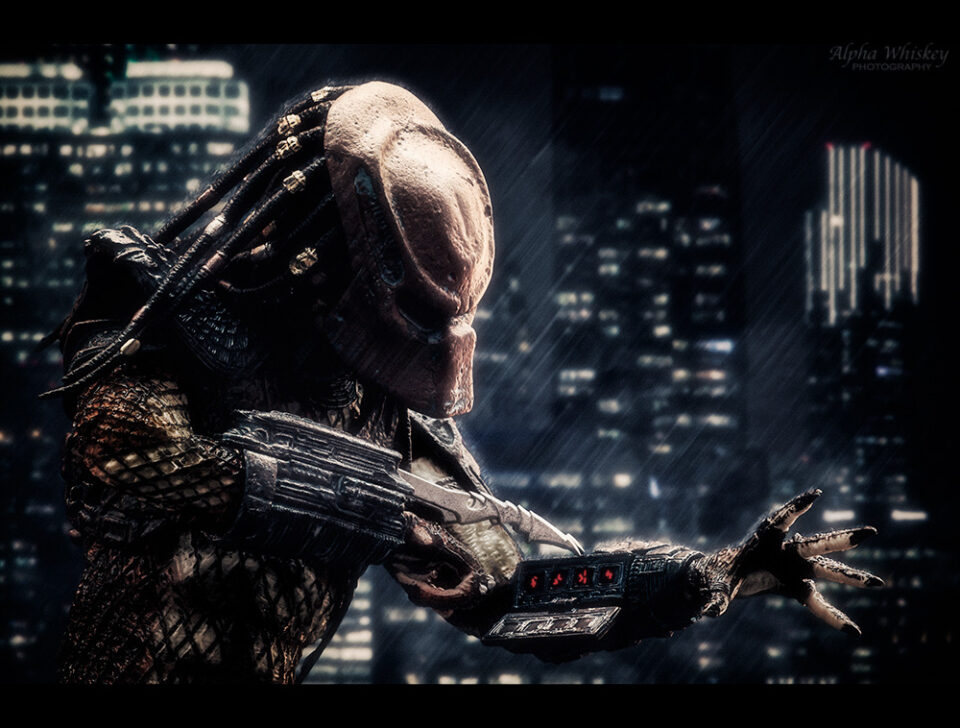
So this article is peppered with a few examples of some projects and commissions I have worked on, some becoming large posters on the wall of a client’s office or their child’s bedroom. I’m not a collector of material things so people who adorn their homes and shelves with action figures and the like are a bit of an enigma to me. But they seem to cherish rarity and uniqueness, and bespoke posters and images are a satisfying way to feed their appetite. Of course, in these uncertain times I counsel them to spend their money on more important necessities!
Creating a scene, as in the T-Rex project below, can be surprisingly simple, as the final image may belie. I used some leftover shelving brackets and some fishing line to double as a fence to re-create a scene from an iconic dinosaur movie. I had a white Land Rover lying around that seemed to be a good relative scale so I used that in the shots.
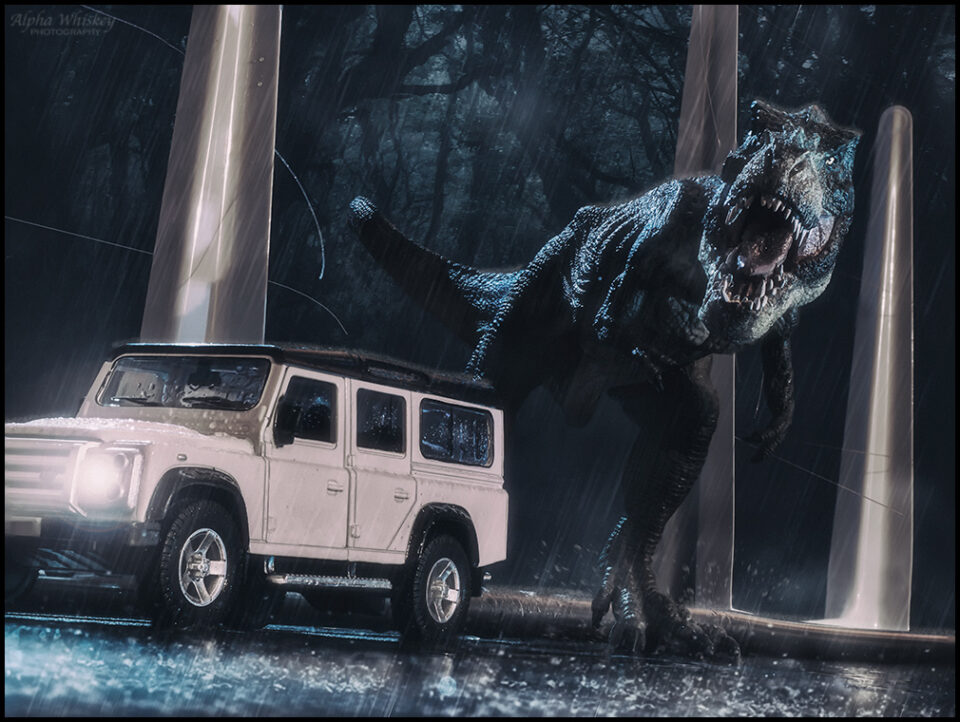
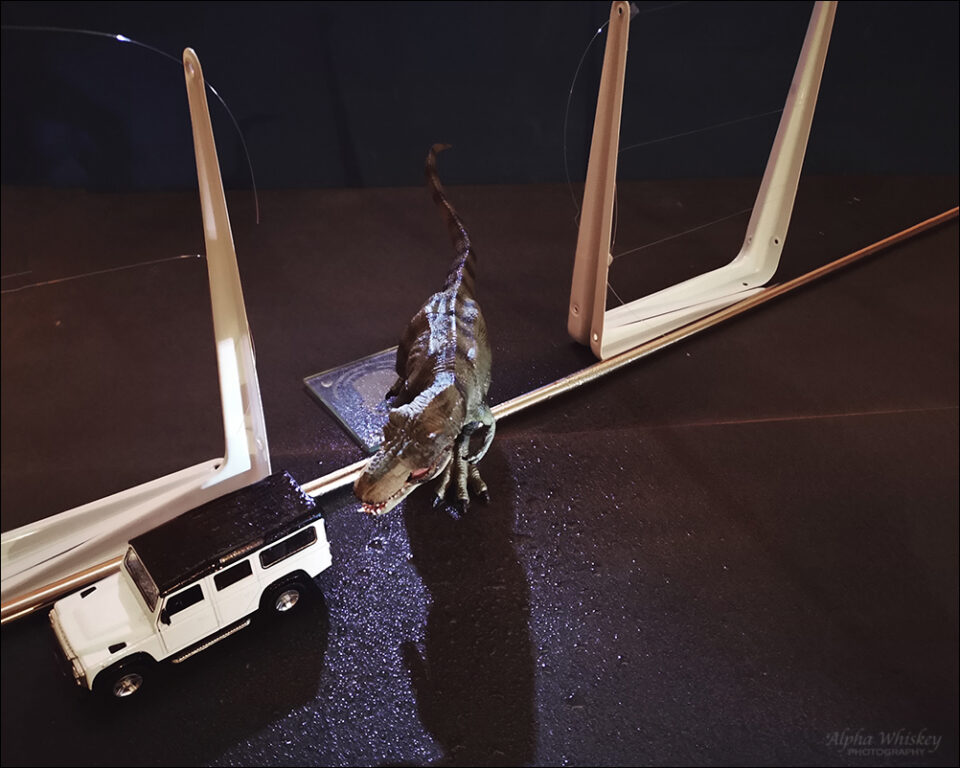
An artificial grass mat became the ground for the chase shots, and some of my photos of the Cloud Forest in Costa Rica (where the movie was actually set) became the background.
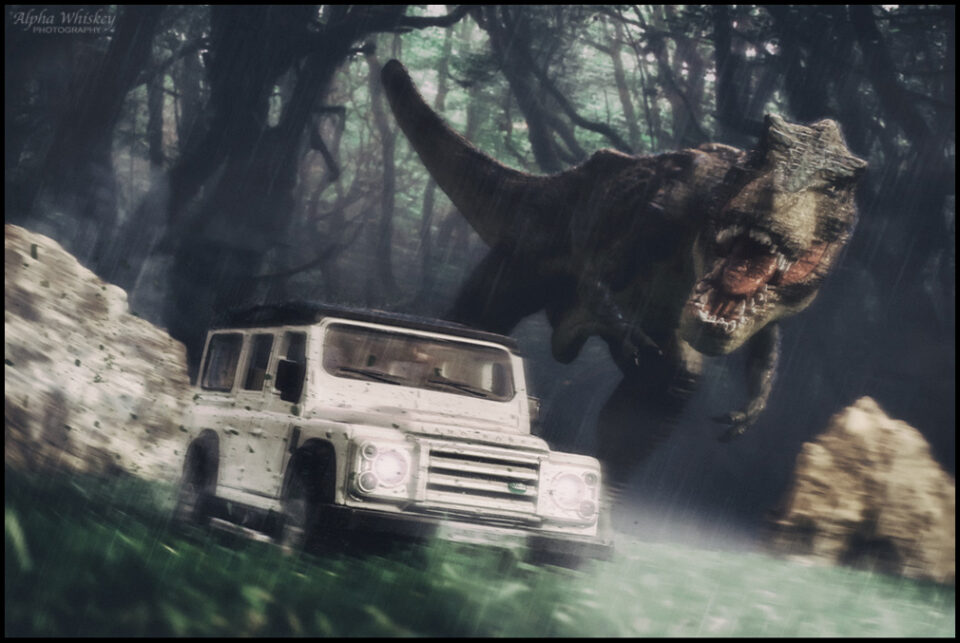
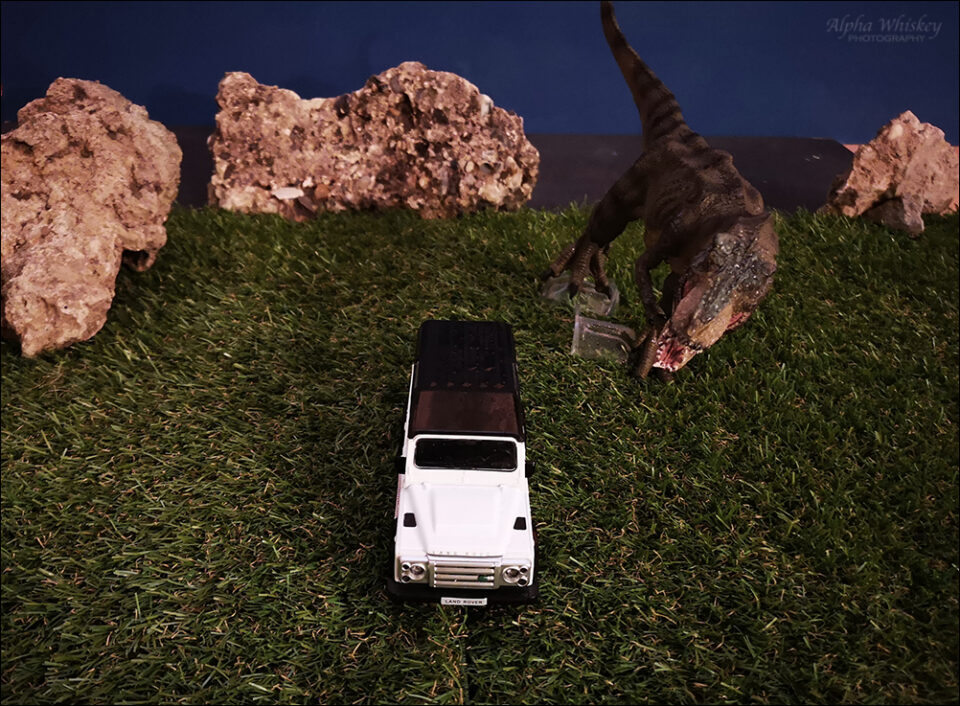
And, of course, I couldn’t resist being silly (this is Alpha Whiskey, after all) and inserting myself into a shot.
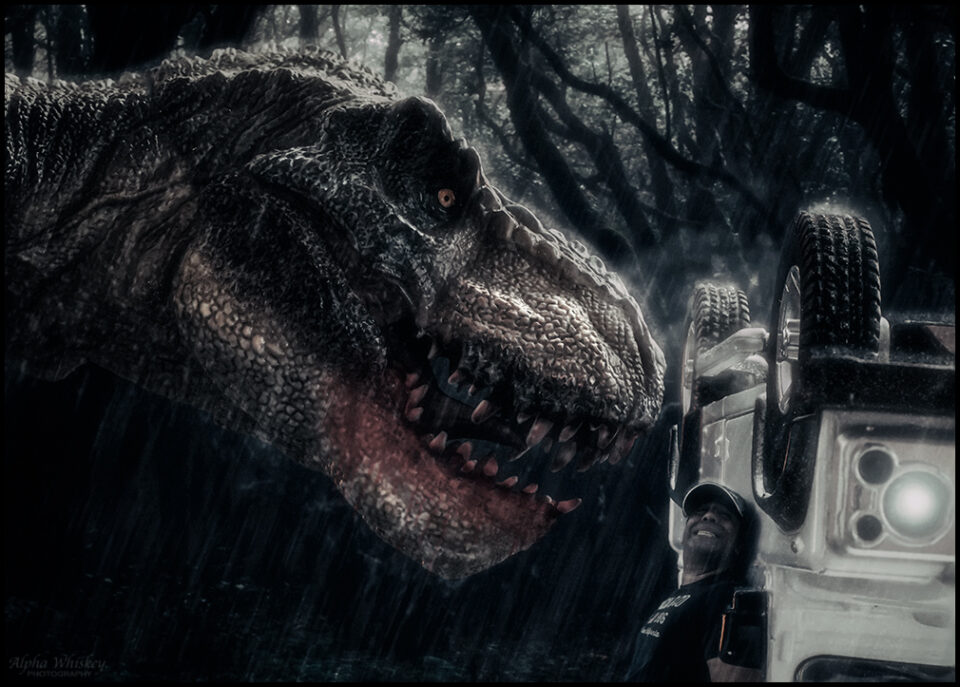
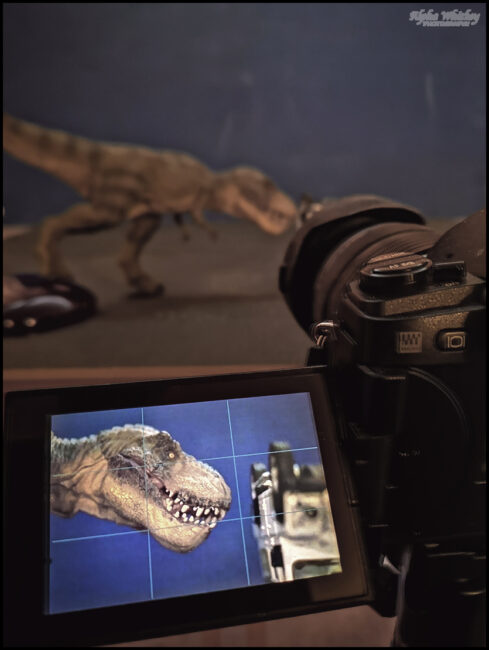
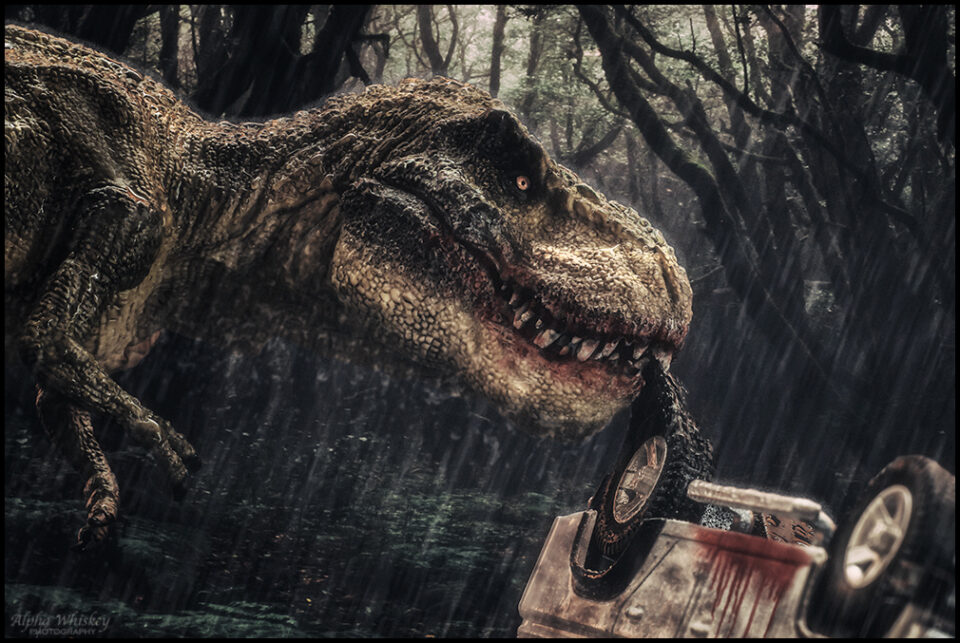
I was particularly pleased with this project given that the 30cm dinosaur wasn’t posable or articulated, except for the opening jaw. A good reminder of the value of composition and framing, and repositioning yourself or your static subject to create different images.
In contrast, the Robocop figure was highly articulated and as a fan of the original movie I enjoyed watching and studying it to inform my shots. I didn’t include many props, other than a 1/18 Subaru that a US client sent to me for a previous job. I wasn’t too interested in distracting backgrounds (especially if these were to be printed large) so I mostly shot everything against a dusk blue backing with directional illumination in keeping with the dark tone of the movie. I know Robocop was a silver hue in the first movie but I used blue spot lighting to give the paint job a more metallic look and shadows played their part in masking the plastic.
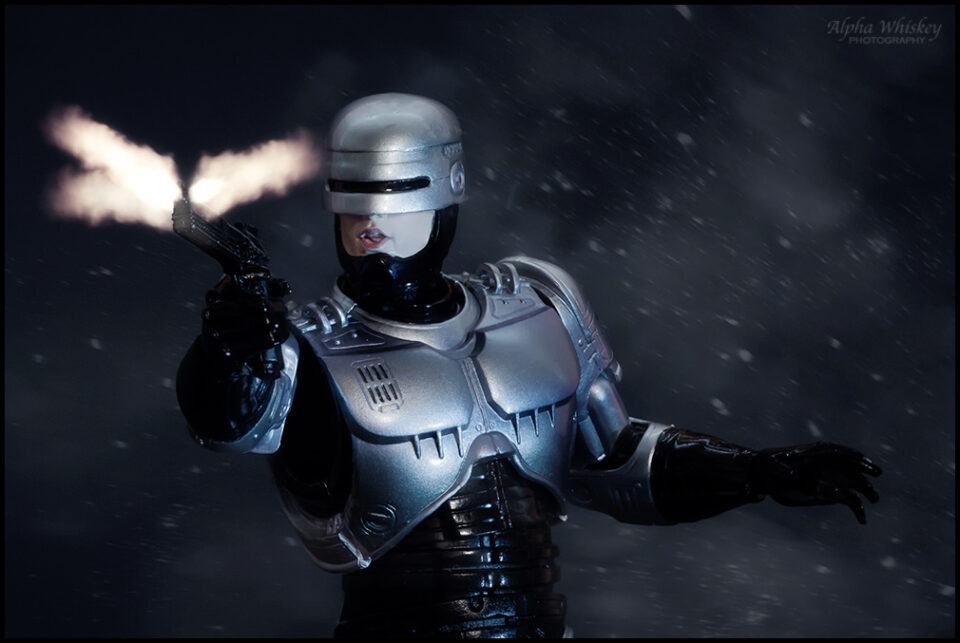
I shot the car separately as it was a different scale and then composited the 15cm Robocop into the shot, adding the muzzle flash, fire and bullet holes in post.
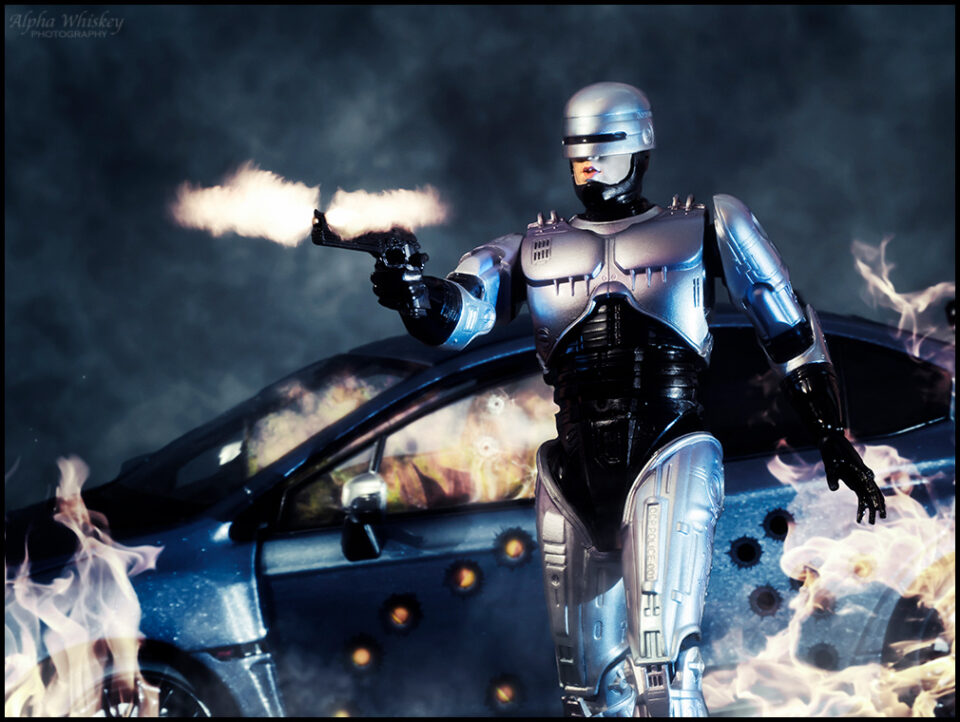
And more of a poster image, composited onto a background explosion:
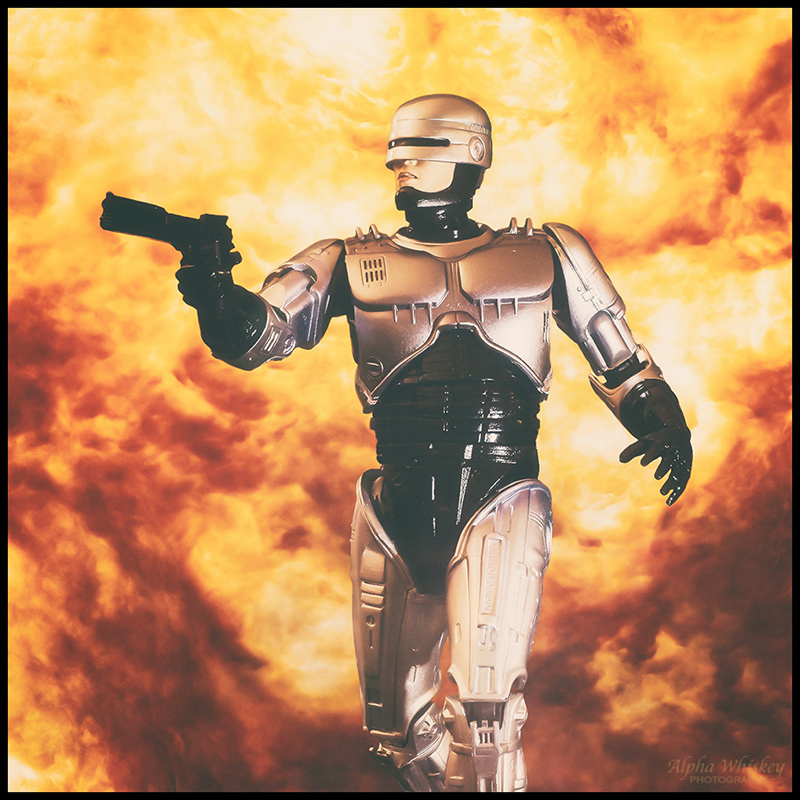
When Robocop is introduced in the film, it’s a gradual revelation with him first appearing behind some frosted glass in the police precinct. So I took a frosted glass table tray and placed the edge of a photo frame by it to mimic that scene. A spotlight was shone from above to suggest a ceiling light.
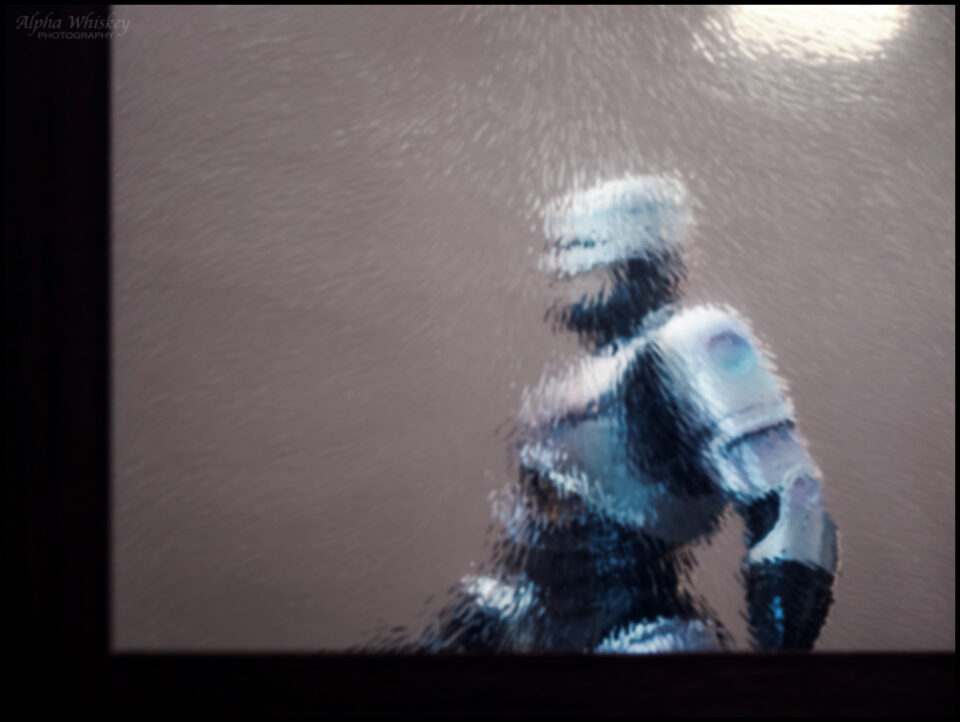
Many automotive magazines can potentially cut costs (unless they hire me!) by using diecast cars instead of the real ones, saving on the cost of the real car, a spare car for parts, a mechanic, fuel, location, to say nothing of the exorbitant price of a photographer (just kidding – I know most of you are struggling). So the Diecast Cover Model project aimed to demonstrate how potentially convincing (or not) model cars could be in place of the real thing…
And I had a little fun with the titles and text…
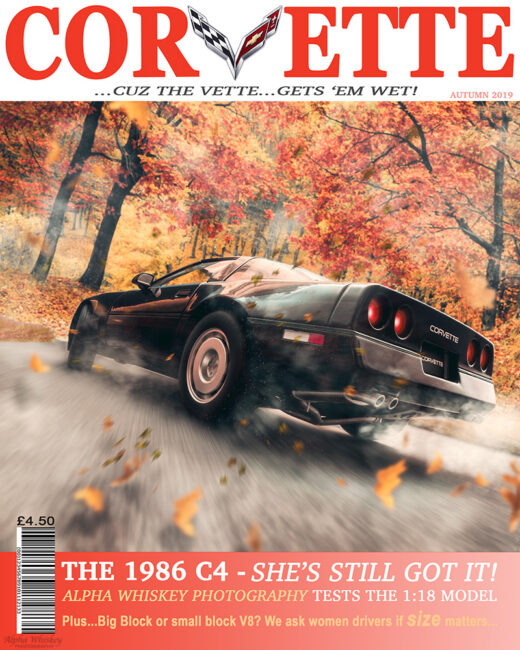
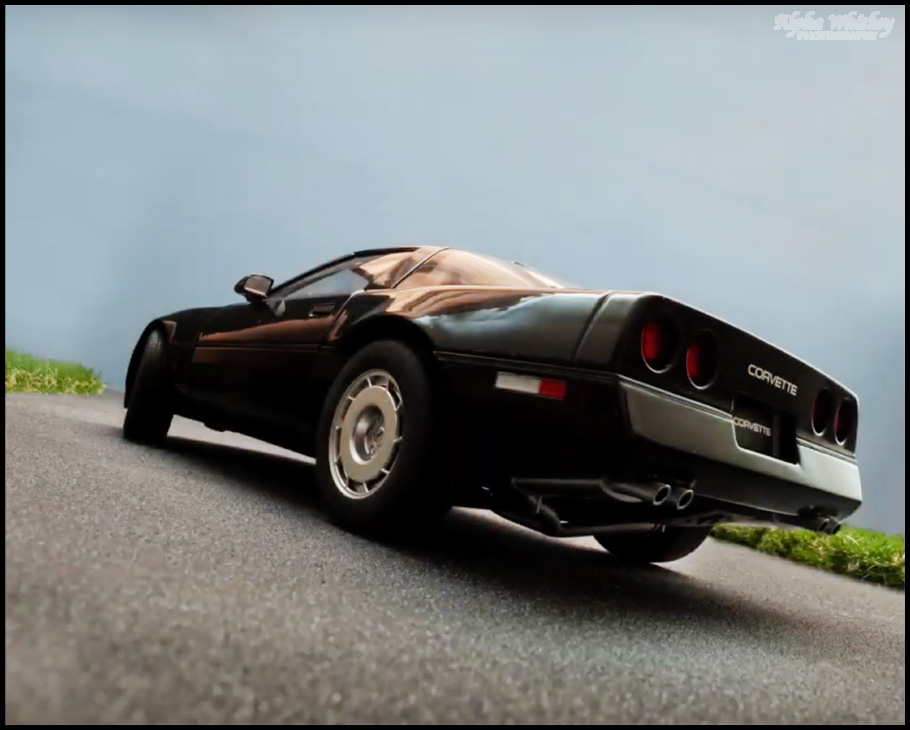
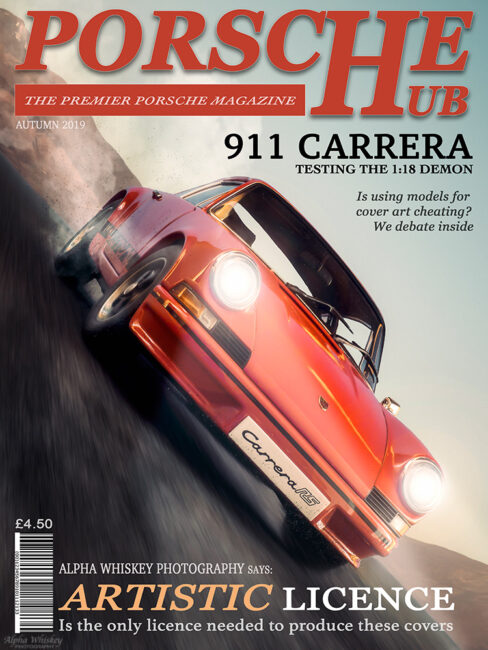
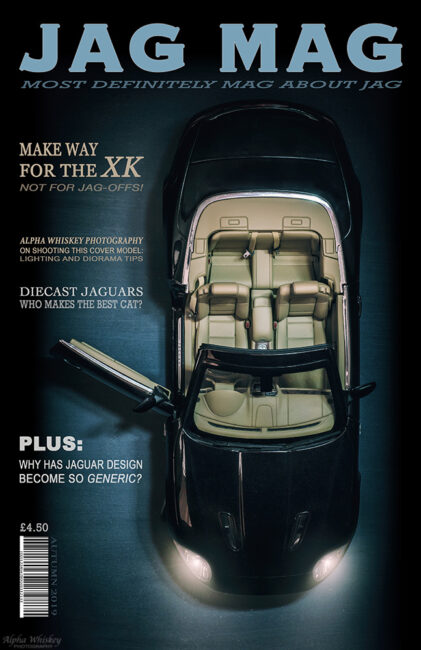
Ferrari in the snow was another simple such project for someone. Foam packaging for ground snow and some rocks from the garden, everything dusted with baking powder.
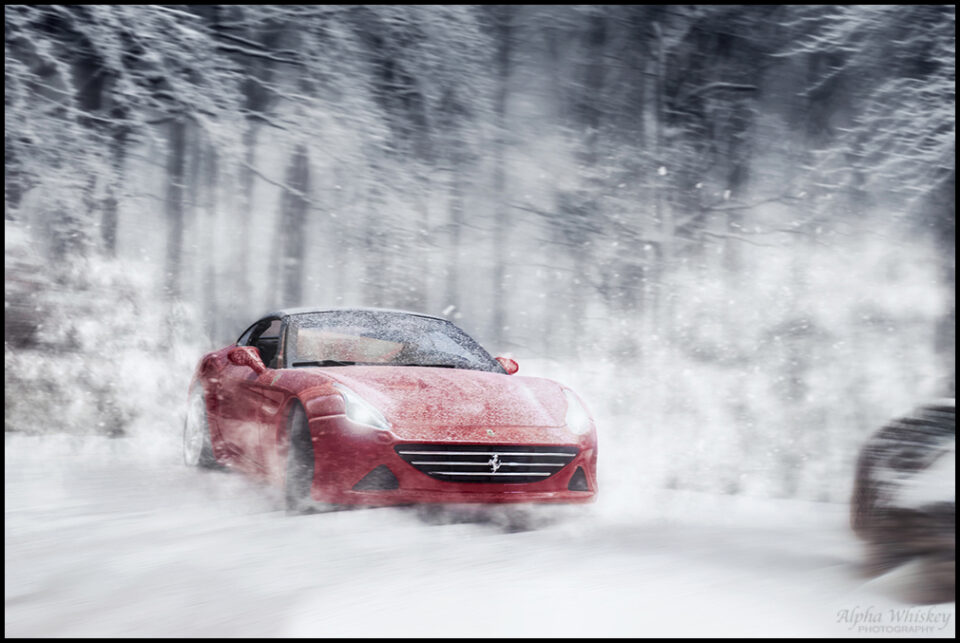
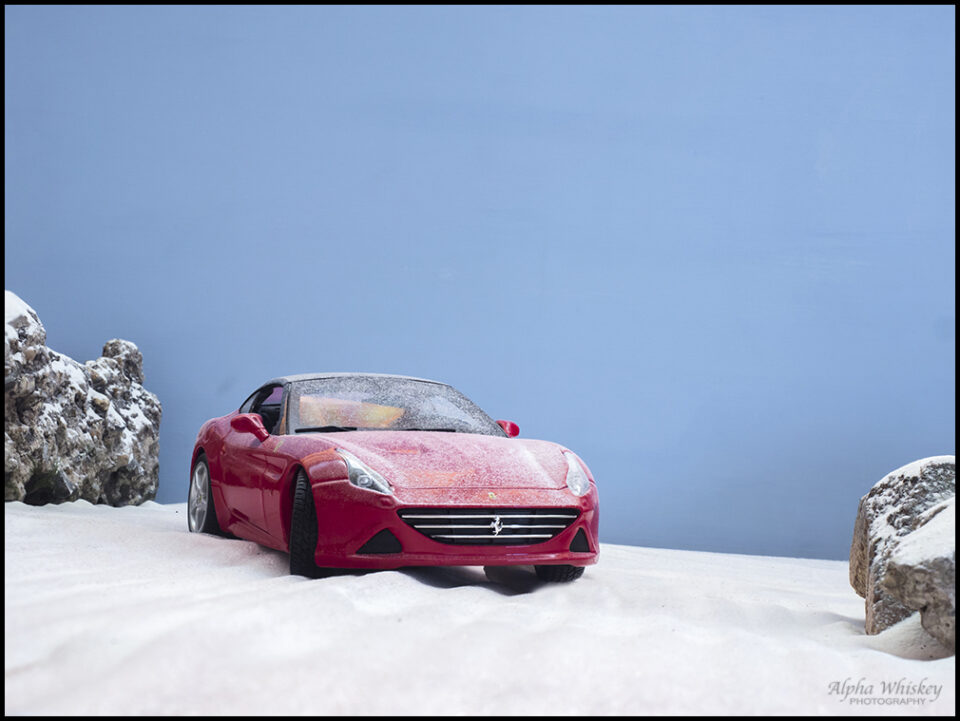
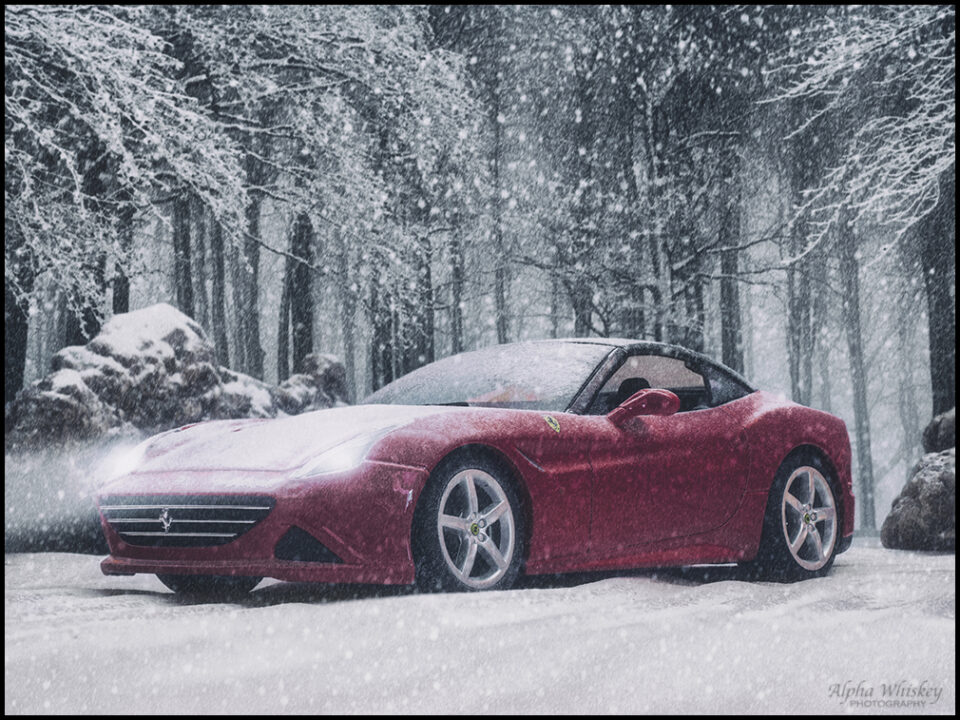
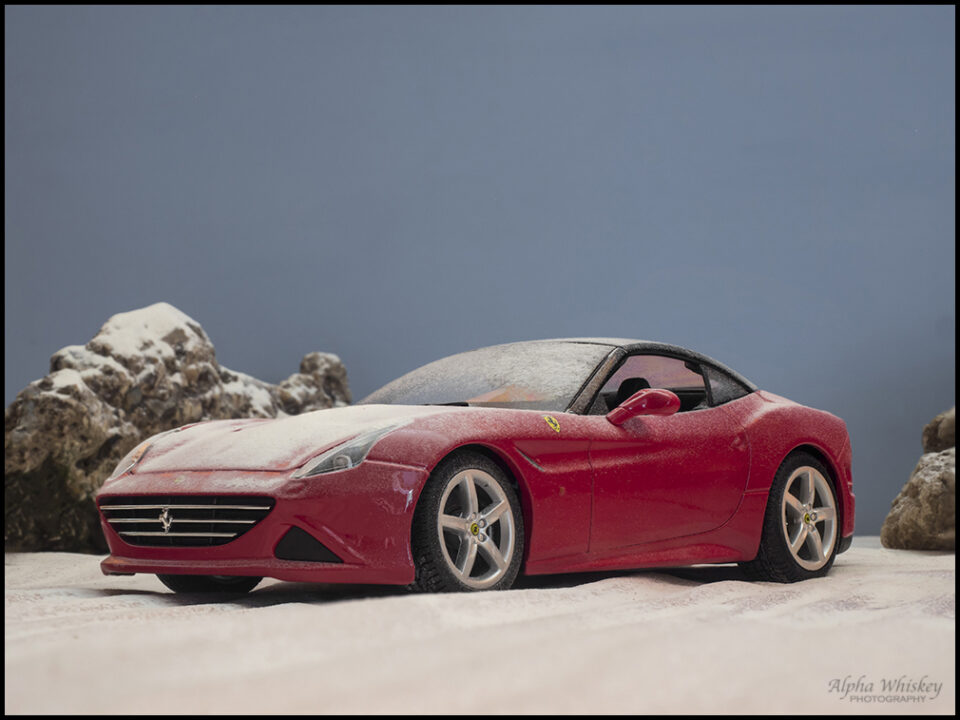
Cop Car was an homage to the cop shows of my childhood, such as TJ Hooker, with the hefty William Shatner and his trademark staccato delivery no match for his Dodge Monaco cruiser that chased down perps and eventually flipped over for no apparent reason. A regular cheese-fest with a generous side order of ham, alas I didn’t have the actual Monaco from the show so I borrowed an older version plus a couple of muscle cars from a previous client.

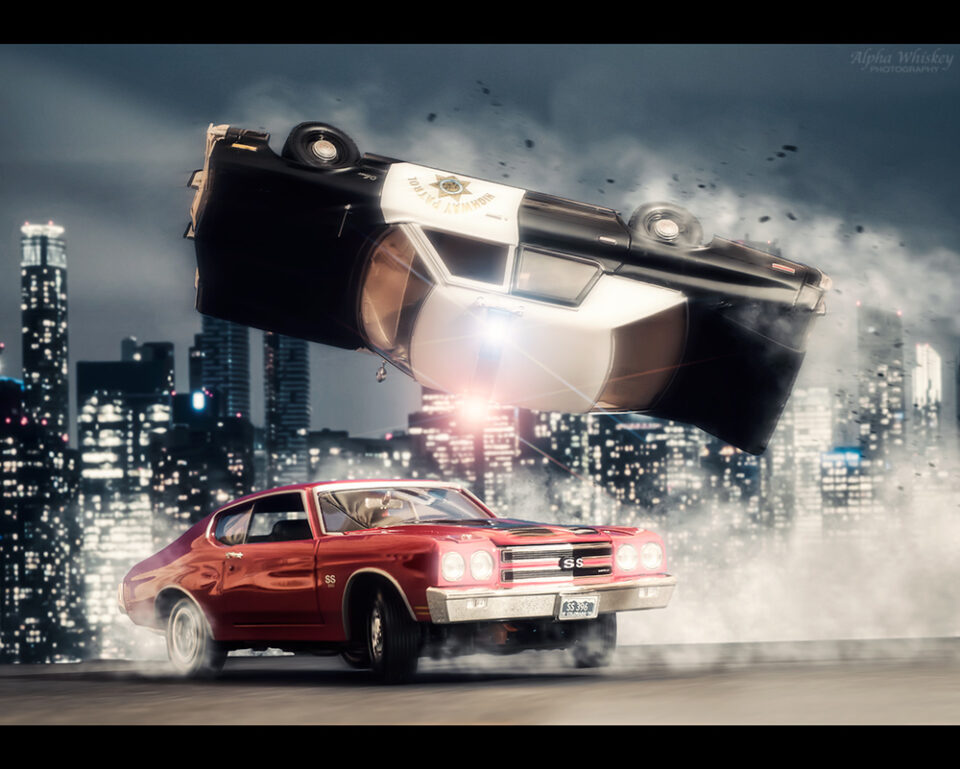
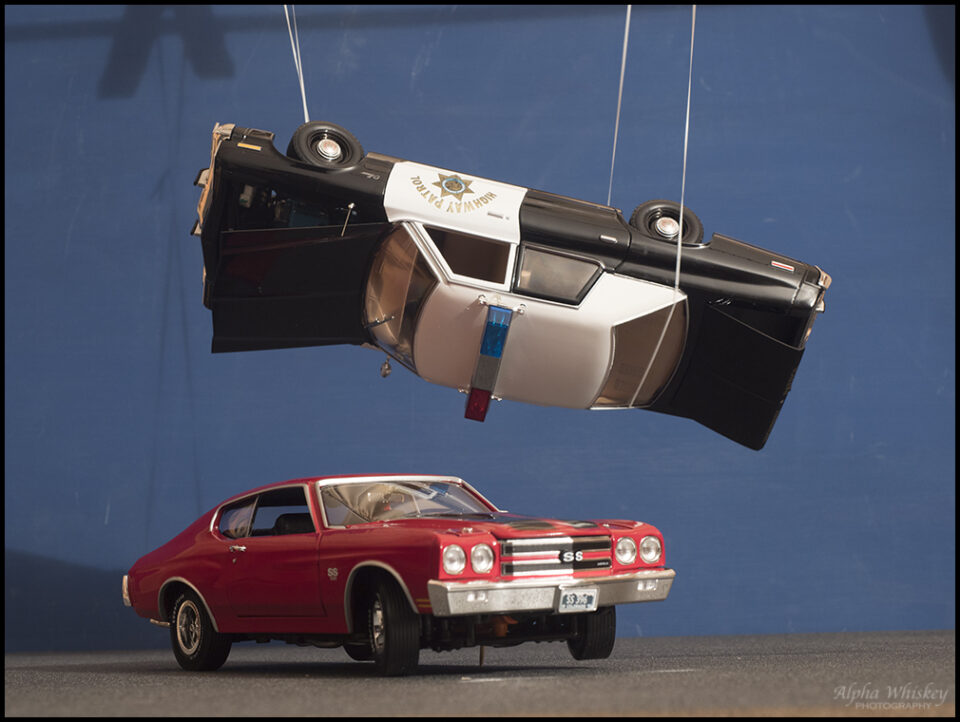
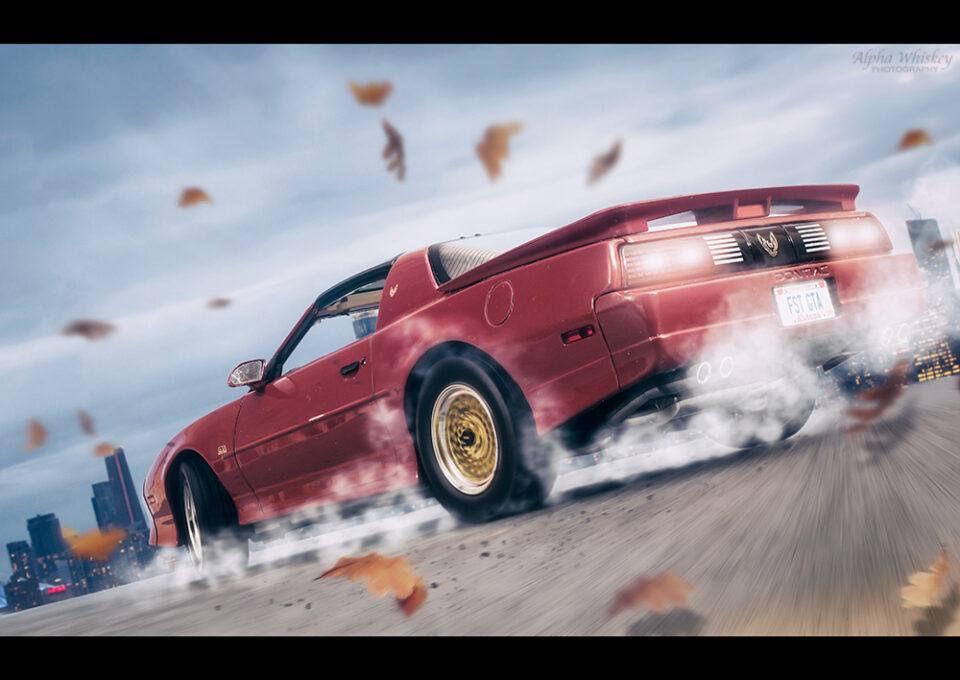
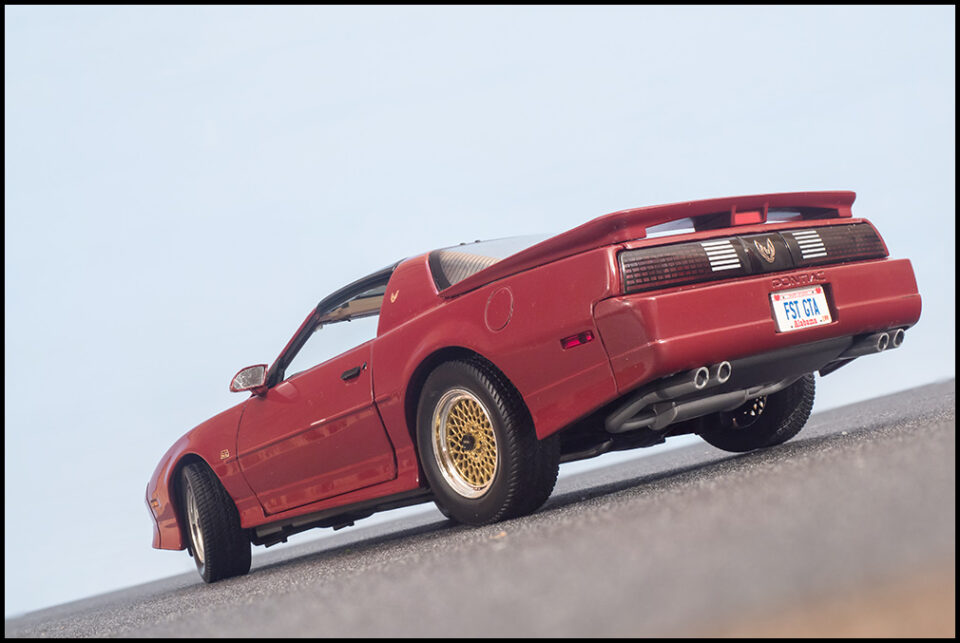
Gear is less important in this endeavor than your own inventiveness. So use whatever you have. Obviously having some knowledge of editing with software can help but the more you can do in-camera (real smoke and lights) the better.
Even if you don’t like the images here the point of this article is to encourage you to use your lockdown constructively, not just with photography but also as a way to engage and collaborate with your family on creative projects. While I am not personally affected by the lockdown measures I realize there is great uncertainty and anxiety for many people. Do not lose hope or faith in yourselves. Take this time to cherish and use your innate gifts. When life returns to normal you can look back on this time and reflect that you spent it enjoyably and in a way that brought you some comfort and reassurance while strengthening the bonds between your loved ones. Be well, safe and have fun if you can.
As Robocop would say: Thank you for your co-operation. Goodnight.
